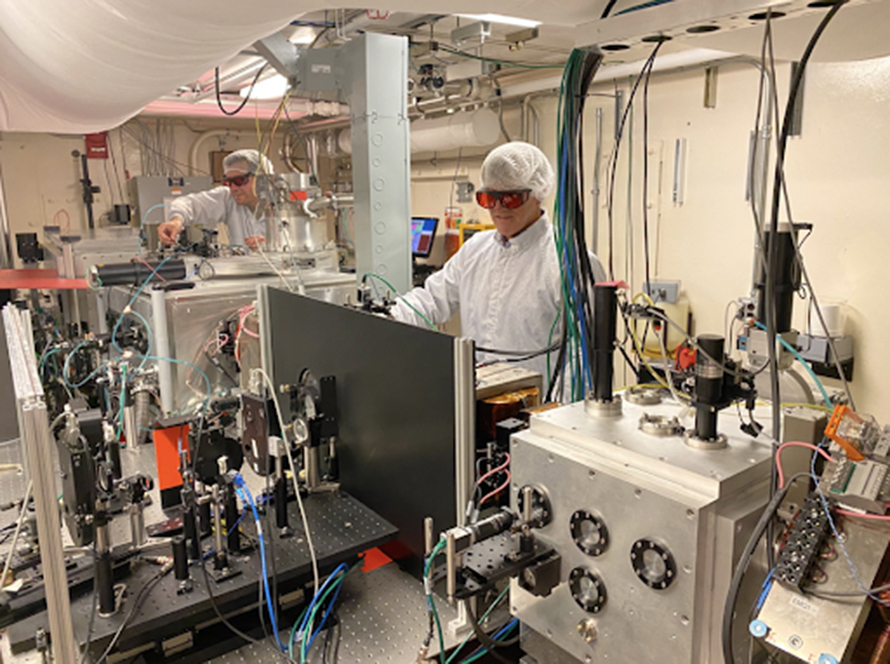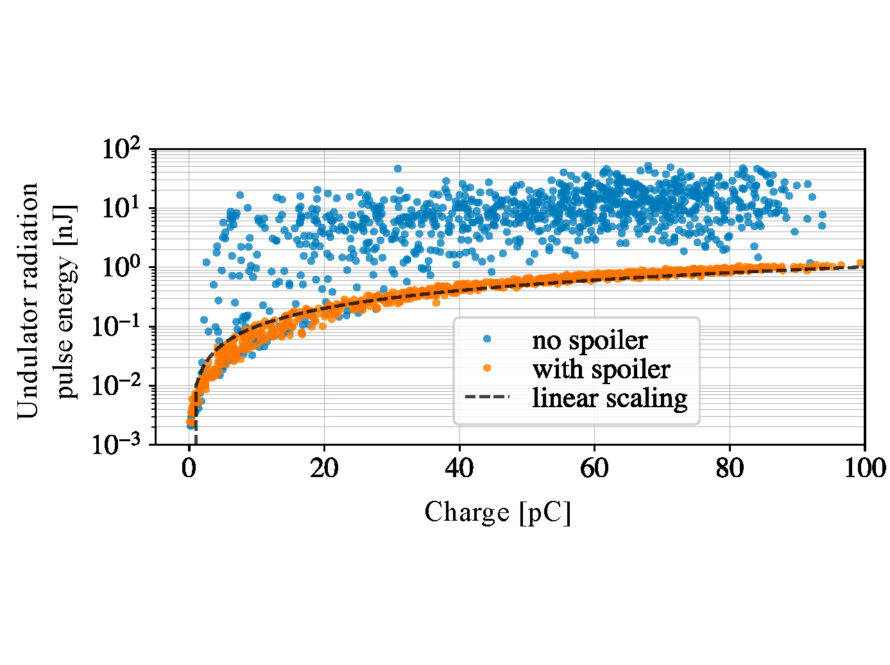Key Takeaways
- Researchers have built a compact X-ray free-electron laser (XFEL) using laser plasma accelerators to generate and sustain high-quality electron beams.
- XFELs have been transformative for basic and applied science.
- Incorporating plasma-based accelerators can push their impact further through the development of compact facilities, extending the performance of current facilities, and research applications such as high-resolution imaging.
New research by scientists from the U.S. Department of Energy's Lawrence Berkeley National Laboratory (Berkeley Lab), in collaboration with scientists from TAU Systems Inc., has brought the promise of smaller and more affordable X-ray free-electron lasers one step closer to reality.
X-ray free-electron lasers (XFELs) are powerful light sources and are typically large research instruments. Scientists use them to probe nature's secrets at the atomic level, enabling advances in medicine, biology, physics, materials, and more. The push to develop more compact and less expensive XFELs is expected to increase the number of facilities that will be able to implement this technology, greatly expanding its impact across many areas of science.
"We are applying our long-standing expertise in a type of advanced accelerator called laser plasma acceleration to shrink XFELs"
— Sam Barber
"As part of this effort, we are applying our long-standing expertise in a type of advanced accelerator called laser plasma acceleration to shrink XFELs," said Sam Barber, a staff scientist in Berkeley Lab's Accelerator Technology & Applied Physics (ATAP) Division. "In addition to standalone light sources, exceptionally high-quality electron beams from plasma accelerators could be injected into existing XFELs to significantly extend their performance."
Barber is the first author of a new study published in Physical Review Letters that demonstrates foundational technology on how XFELs might be scaled down significantly, yet still deliver the remarkable seeing power of much larger machines. Other co-authors of the study include Berkeley Lab's Jeroen van Tilborg, Carl Schroeder, and scientists from TAU Systems Inc.
Harnessing laser plasma accelerators to shrink XFELs
In their new work, the researchers advance the use of laser plasma accelerators (LPAs) to generate high-quality electron beams. The plasma is a gas of positively charged ions and negatively charged electrons. For their method, van Tilborg, a senior scientist at the Berkeley Lab Laser Accelerator (BELLA) Center, explained that rather than pumping radio-frequency waves into a long linear accelerator to accelerate the electron beams, "we excited a wave [of electron density] in the plasma, in which other background plasma electrons can ride and accelerate on order of 1,000 times faster than in an accelerator."
Researchers are limited to electron beam acceleration gains of about 50 megavolts per meter in a conventional linear accelerator. With plasmas, however, 100 gigavolts (GeV) per meter are possible, which is more than 1,000 times stronger, thus shrinking the accelerator distance.
"What that all translates to," said van Tilborg, "is that you can generate multi-GeV electron beams, and rather than it taking a kilometer [of physical space], it takes meters or less to get there."
Reaching these high energies is only one part of the recipe, as XFELs also require exceptionally high-quality electron beams - another aspect where the high fields of the plasma can be helpful if controlled correctly. If these two conditions are met, and when the electron beam traverses special magnetic devices called undulator magnets, the wiggling beam begins to radiate. If conditions are just right, the radiation amplifies exponentially as it moves along the undulator, creating some of Earth's brightest sources of X-rays.


To exploit the compactness LPAs provide, the plasma-based accelerator also needs to produce high-quality electron beams reliably and stably. In this work, the Berkeley Lab team made a significant step toward this goal by demonstrating strong exponential growth of the FEL radiation with exceptional stability and reliability over hours of operation. The experiments were carried out at the BELLA Center on a system years in the making. Their work is an advance to earlier LPA FEL work by Wang et al. and Labat et al. in terms of LPA FEL physics and light source robustness.
Opening new frontiers in biology and other applications
The promise of compact XFELs could open new frontiers in biological research by enabling on-site imaging of complex proteins, in materials science through powerful imaging of nanostructures, and in photolithography for manufacturing the most advanced semiconductor chips.
"LPAs are a high-gradient accelerator technology that has the potential to impact applications where there is a premium on compactness," said Schroeder, a senior scientist in the BELLA Center. "Development of LPA-based free-electron lasers is an important stepping stone to other applications of this technology, such as linear accelerators for high-energy physics."
The standalone potential of LPAs to produce extremely bright electron beams also offers a path towards upgrading existing XFEL facilities to extend their reach. Conventional FELs typically reach the so-called saturation regime, where the exponential increase in pulse energy plateaus. Operating an LPA-driven FEL in the saturation regime, and pushing the radiation wavelength into the X-ray regime, are major next steps for the LPA field. "We're confident that our setup at the BELLA Center gives us an ideal platform to continue to make milestone progress and establish a roadmap towards the development of LPA-driven light sources," said Barber.
TAU Systems Inc. played a key role in this work. Their team brought expertise on accelerator beam physics and operational concepts to the BELLA Center's Hundred Terawatt Undulator LPA FEL facility. This proved impactful in successfully coupling the electron beam at the plasma source to and through the undulator. "These FEL results confirm the premise that the LPA has opened a revolutionary paradigm shift in how we view accelerators, what they look like, and what is possible with them," said Stephen Milton, the lead scientist from TAU Systems Inc. on this project.
"It's a big result," Barber said of the recently published work. "The fact that the two to three orders of magnitude FEL gain is so significant proves the LPA is producing the high-quality electron beams required to make FELs work. And the fact that it's so reliable over tens of successive experimental campaigns speaks to the robustness of the LPA. We're very happy with the result, and there's still more on the table."
"The development of high-quality (low-emittance, high peak-current) LPA electron beams is critical to compact new FELs and upgrades to existing light sources, and also represents a key milestone on the roadmap to high-energy particle colliders where high-brightness beams are a key to high-energy physics colliders experiments at meaningful statistics," said Cameron Geddes, director of the ATAP Division.
This research was supported by the U.S. Department of Energy (DOE), Office of Science, the Office of Basic Energy Sciences, the Office of High Energy Physics, and through a Cooperative Research and Development Agreement with TAU Systems Inc., and by the Gordon and Betty Moore Foundation.






